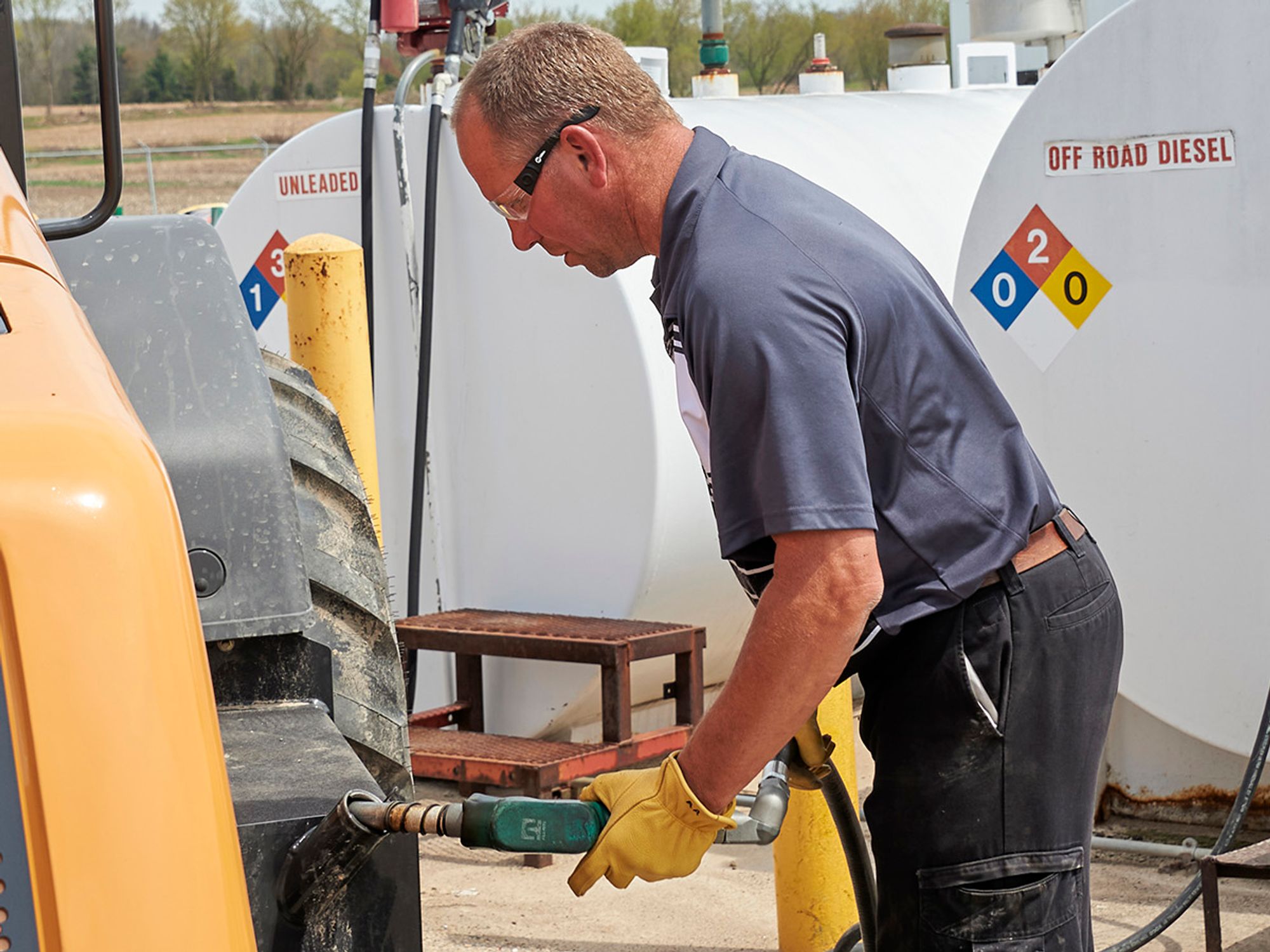What are requirements for fueling?

- When it comes to batteries and fueling, OSHA has specific safety requirements for PIT operators.
Battery charging
The Occupational Safety and Health Administration (OSHA) requires employers to charge batteries only in a properly equipped location. A properly equipped battery charging area will have:
- No smoking.
- Warning signs posted.
- Adequate fire protection.
- Ample and readily available water supply for flushing and neutralizing spilled electrolyte.
- An eyewash able to provide a 15-minute flow, and for large installations, a drench shower and an eyewash.
Note: OSHA has said that where batteries are simply being plugged in for charging — there is no maintenance performed, no removal of batteries from the trucks, and no electrolyte is present in the area — there usually isn’t a need for an eyewash/shower. - A phone or other means of communication in the event of an emergency.
- Adequate ventilation to avoid the buildup of hydrogen gas during battery charging.
- Soda ash or other neutralization materials in the immediate area.
- A dry chemical, CO2, or foam fire extinguisher.
- Means to protect charging apparatus from damage from trucks.
Only trained personnel should charge and change batteries in electric forklifts. In addition to training in battery changing and charging procedures, these employees should be trained on emergency procedures in the event of an acid splash, including how to use eyewash and shower facilities.
OSHA directive STD 01-11-004 offers further clarification. It says that “battery charging” areas where power industrial truck batteries are charged only — meaning no maintenance is performed, batteries are not removed from the trucks, and no electrolyte is present in the area — are not subject to the requirement of paragraph (g)(2) of 1910.178. However, the charging areas shall be in compliance with paragraphs (g)(1) and (g)(8) to (g)(12) of the regulation, and personal protective equipment (PPE) shall be used when and where required.
Best practices and requirements
In addition to having a properly equipped charging area, it is important employees follow safety procedures when charging batteries. OSHA has requirements covering some portions of the charging operation. Trained personnel should:
- Follow the recharger manufacturer’s recommendations for attaching and removing cables and for proper operation of the equipment.
- Properly position trucks and apply brakes before attempting to change or charge batteries.
- Use a lifting beam or equivalent material handling equipment when lifting the battery. Employees should not use a chain with two hooks. This may cause distortion and internal damage.
- Charge batteries in the designated battery charging area.
- Pour acid into water when charging batteries. Employees should never pour water into acid.
- Take care to assure that vent caps are functioning. The employee must ensure the battery (or compartment) cover(s) are open to dissipate heat.
- Prohibit smoking in the charging area.
- Take precautions to prevent open flames, sparks, or electric arcs in battery charging areas.
- Remove all metallic jewelry before recharging. Employees should keep tools and other metallic objects away from the top of uncovered batteries.
- Wear PPE (e.g., face shield, safety goggles, neoprene or rubber gloves and apron).
- Check the electrolyte level before recharging. Employees should record the specific gravity with the hydrometer in the service log and check the pilot cell.
- Check the water level. Employees should not add water prior to recharging. This should be recorded in the service log.
- Check the voltage. If the battery has sealed vents, employees should not recharge with a current greater than 25 amperes.
- Unplug and turn off the charger before connecting or disconnecting the clamp connections.
- Attach the positive clamp (+, usually colored red) to the positive terminal first and then the negative clamp (-, usually colored black) to the negative terminal, keeping the proper polarity.
- Turn off the charger if the battery becomes hot or the electrolyte fluid comes out of the vents. Employees should restart charging at a lower charging rate.
- Check water level after charging. Employees should add distilled water or de-ionized water if water level is below level indicator and record in service log.
- Return battery to forklift with lifting beam and secure in place after charging.
- Check the indicator on the hour meter to see that the battery is fully charged.
